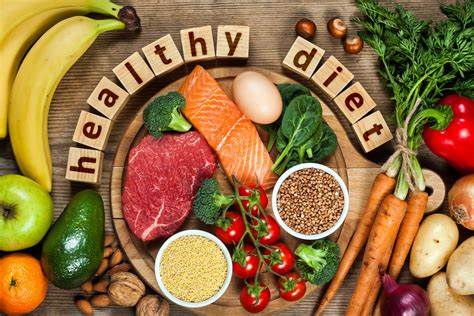Welcome to our blog! Today, we’re diving into the importance of dietary fiber and how it can significantly impact your health. Fiber is an essential part of a balanced diet, yet many people don’t consume enough of it. In this post, we’ll explore the benefits of fiber, the different types, and practical tips on how to include more fiber-rich foods in your meals.
Why Fiber is Important
Dietary fiber, found in plant-based foods, is crucial for maintaining good health. Here are some of the key benefits:
- Digestive Health: Fiber helps regulate bowel movements and prevent constipation by adding bulk to your stool. This can reduce the risk of digestive disorders such as hemorrhoids and diverticulitis.
- Weight Management: High-fiber foods are generally more filling, which can help you feel satisfied and reduce overall calorie intake. This makes fiber a valuable ally in weight management.
- Heart Health: Soluble fiber can help lower cholesterol levels, reducing the risk of heart disease. Foods high in fiber can also help regulate blood pressure.
- Blood Sugar Control: Fiber slows the absorption of sugar, which can help improve blood sugar levels and reduce the risk of type 2 diabetes.
- Gut Health: Fiber acts as a prebiotic, feeding the beneficial bacteria in your gut. A healthy gut microbiome is linked to improved immune function and overall health.
Types of Dietary Fiber
Fiber is categorized into two main types, each with its own benefits:
- Soluble Fiber: Found in oats, legumes, fruits, and vegetables, soluble fiber dissolves in water and can help lower cholesterol and regulate blood sugar levels.
- Insoluble Fiber: Found in whole grains, nuts, seeds, and the skins of fruits and vegetables, insoluble fiber adds bulk to your stool and aids in digestive health.
How to Include More Fiber in Your Diet
Incorporating more fiber into your diet doesn’t have to be difficult. Here are some practical tips:
- Start Your Day with Whole Grains: Choose whole-grain cereals, oats, or whole grain bread for breakfast. Look for options with at least 5 grams of fiber per serving.
- Snack Smart: Opt for fiber-rich snacks like fresh fruits, vegetables with hummus, or a handful of nuts instead of processed snacks.
- Add Legumes: Include beans, lentils, and chickpeas in salads, soups, or as side dishes. They are excellent sources of both soluble and insoluble fiber.
- Load Up on Vegetables: Aim to fill half your plate with vegetables at each meal. Choose a variety of colors and types to maximize nutrients.
- Choose Fruits with Skin: Many fruits, such as apples, pears, and berries, are high in fiber, especially when eaten with the skin.
- Gradually Increase Fiber Intake: If you’re not used to eating a lot of fiber, increase your intake gradually to avoid digestive discomfort.
- Stay Hydrated: Drink plenty of water, as fiber works best when it absorbs water, helping to keep your digestive system running smoothly.
Incorporating the Life! Program
The Life! Program is an excellent resource for anyone looking to improve their eating habits, including increasing fiber intake. The program offers practical tips, support, and resources to help individuals make sustainable dietary changes that can lead to better health outcomes.
For more information, visit the Life! Program.
Useful Resources
- Nutrition Australia: Provides comprehensive information about dietary fiber and tips for healthy eating.
- Eat for Health: Offers guidelines on daily fiber intake and food suggestions to meet those needs.
- Health Direct: Features articles on the benefits of fiber and how to incorporate it into your diet.
Conclusion
Dietary fiber is a vital component of a healthy diet, offering numerous benefits for digestion, weight management, heart health, and more. By making small changes and incorporating more fiber-rich foods into your meals, you can significantly improve your overall health. Remember to consult resources like the Life! Program for support and guidance on your journey to a healthier lifestyle.







